Fri, 7 May 2021
Historical - Cultural Itinerary of Funchal
Here you can find a list of Museums that Madeira has to offer, including the history of Funchal, dating back to 14th century. You can guide your curiosity with this map that shows the locations of the museums. At the end of the journey, you will know all about Madeira’s wine, embroidery history, the Christianity, you will find some fauna and flora, know some important people who lived here and see valuable artifacts of the Island.
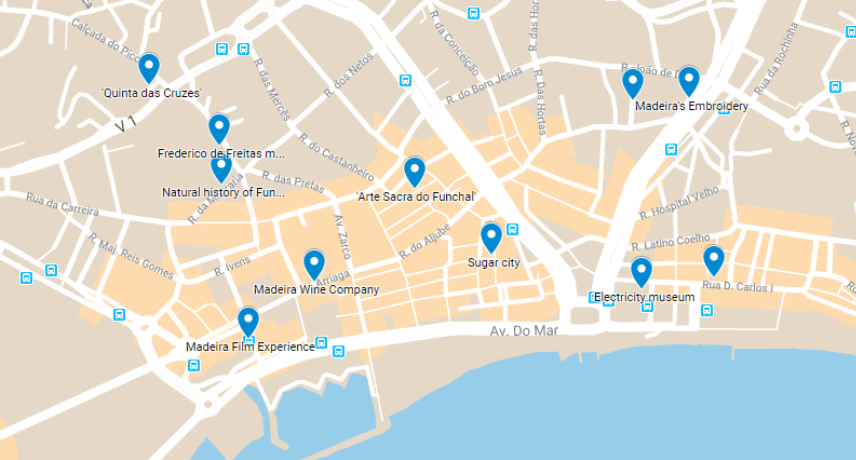
Electricity museum
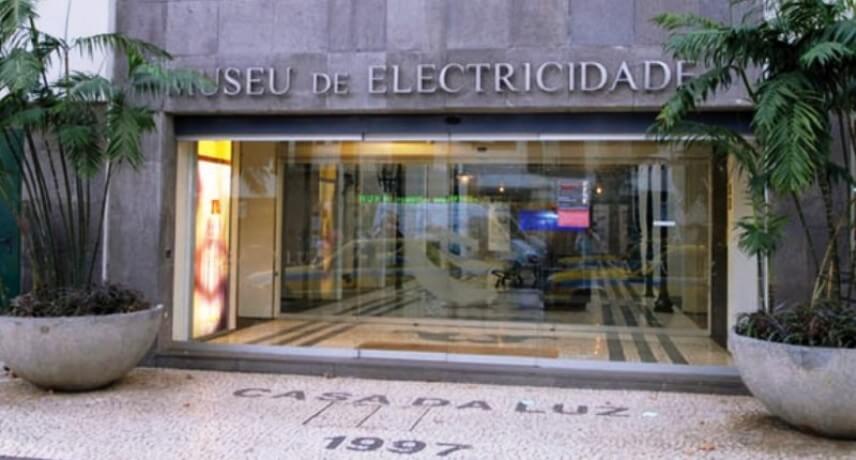
What was the electricity museum in 1897?
The Electricity Museum was installed where it once was located the old Funchal Power Plant, inaugurated on June 1897.
This was the first electricity company and it was only decommissioned in 1989, but it has housed since then ‘the Casa da Luz Museum’ instead. Its collection consists of rare models of machinery and equipment more than half a century old, visitors here can experience the past, the present and the future of electrical technologies in Madeira.
This Museum may not be everybody's cup of tea, but for engineering or industrial history, this is a must see.
What to see inside the museum?
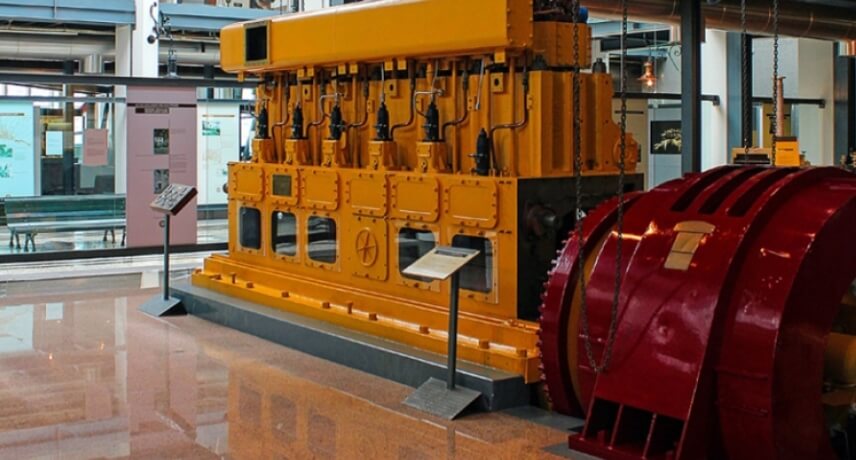
A first display area shows an exhibition about the different types of lighting used in Funchal, from oil burners to present-day street lamps.
“A century of electricity” is the name of the second thematic area and it presents the progression history of electrification on the archipelago. This space is dedicated also to a model of various power plants, and a three-dimensional map of the Island, showing how electricity was brought to Madeira.
The third area has science and technology, that provides interactive multimedia software equipment where you can find a virtual reality helmet, a plasma ball and fibre optics.
Location: Rua da Casa da Luz n.º 2, 9050-029 Funchal
Phone: +351 291 211 480
Opening Hours: Tuesday-Saturday 10am-12.30pm | 2pm-6pm
Closed on Mondays, Sundays and Holidays.
Ticket Price: € 2 | Students and Pensioners € 1
Madeira Story Centre
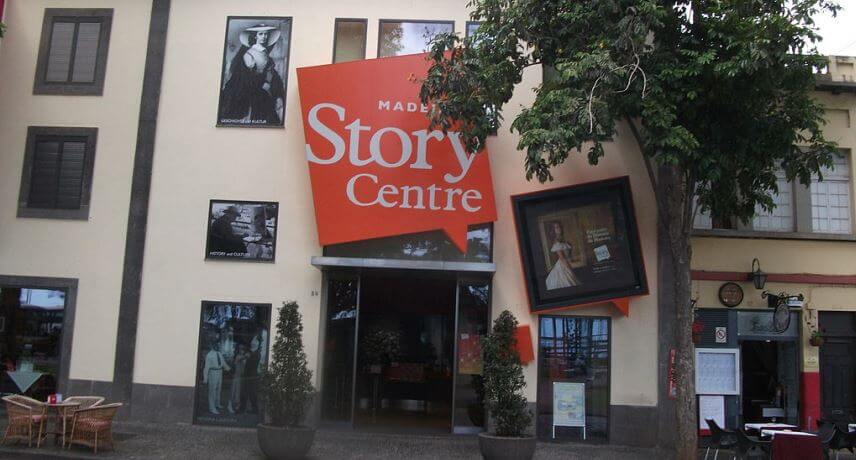
What is the Madeira Story Centre?
Madeira Story Centre is a museum located in the Old Town of Funchal, where you will get to know the whole history of Madeira in an entertaining way.
This place illustrates the history and development of Madeira’s culture and you will feel part of it because you can interact with the exhibitions and feel the environments of different times through hearing and scent.
This museum should be your starting point to visit Madeira because even if you’re not a "museum lover", Madeira Story Centre can be a great way to be part of the great things to do and see in Madeira.
What to see inside the museum?
Start on the top floor, it has a terrace with views out to the sea and endemic plants, that extend all the way around (such as sugar cane and grapes which are a fundamental component of Madeira Wine).
On the floor below this museum has exhibitions from the volcanic origins with various rock types existing on the island, to interactive attractions, organized by chronological order, from the first references of the island, through to the various legends about its discovery, the sugar cane discovery and evolution of Madeira Wine, and many more stories about navigation, culture, flora and fauna that will give a great introduction to the island.
Location: Rua D. Carlos I, nº 28-29 9060-051 Funchal
Hours: Monday to Sunday from 10:00 to 18:00
Madeira’s wine and embroidery institute

What is this about?
Madeira Wine Institute aims to preserve and guarantee the future of the regional art and to produce good wine ensuring the discipline with the production and commercialization of Madeira Wine and, in general, to coordinate all viticultural activities in the Island.
Embroidery History
Embroidery is part of Madeira’s history and culture and was originally introduced in 1784 by the English Phelps family, a wealthy wine shipper. Elizabeth Phelps, daughter of Joseph Phelps, started all of this embroidery industry, with her original design and skills and her overseas connections she started to sell the work of the Madeiran embroiderers to the parlors of Victorian England. Later she started to teach children and women to embroider, which still today has remained an important part of the regional economy along with the wine market to teach children and women to embroider.
The countries that most imported embroideries were England and Germany until it became so known that in the 20th century, Madeira embroidery exports gained a worldwide dimension. It was so internationally recognized for its refinement, art and tradition that in 1985 a statue in the picture was erected by ‘Anjos Teixeira ’to honor the traditional Madeira embroidery profession and teaching.
This Madeira’s wine and embroidery company is located where once was ‘the Madeira Embroidery Industrial Association’, opened in 1958, and designed by the architect Fabrício Rodrigues where the main goal is to display the most important regional handicrafts and its evolution.
Adress: Rua Visconde de Anadia, 44 – Funchal
Open from Monday to Friday from 10:00 to 12:30 and from 14:00 to 17:30
Closed: Saturdays, Sundays and Public Holidays
Mary Jane Wilson Museum
Who was Mary Jane Wilson?
Mary Jane Wilson, was the founder of the Franciscan Congregation of Our Lady of Victories. Born in India, she moved to Madeira to take care of an English patient, and since then lived the rest of her life on the island. Among the Madeiran people, she was known as the “Good Mother”, because she dedicated herself to educating children, the sick, and instituting several works in favor of the poor.
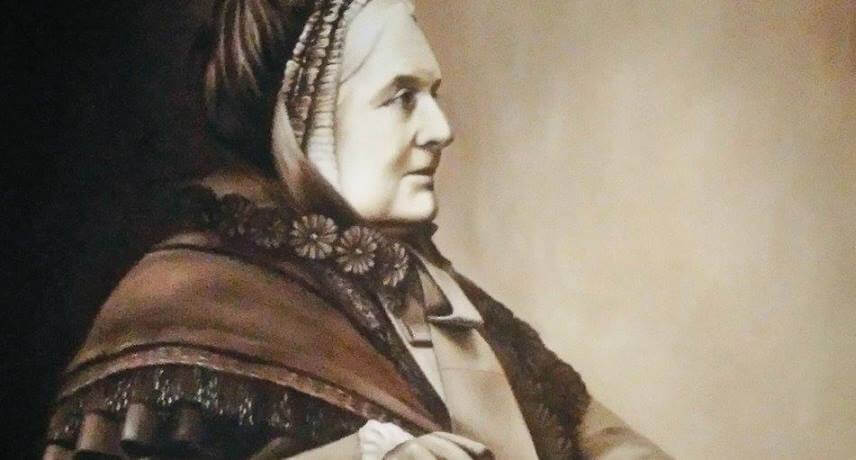
What to see inside the museum?
This museum is a tribute to Mary Jane Wilson, and her work in creating orphanages and schools.When you first get in the museum you can find the Sister's life and several works with exhibitions of documents with old photographs and personal objects.
The second room is for prayer and recollection that aims to convert to Catholicism and the third and fourth rooms, shows her work as a nurse, namely during the smallpox outbreak in 1906. In the fifth and last room, there is a collection of drawings made in the 50s of the 19th century, with emphasis on the English landscapes.
There are two sculptures in Madeira of this woman, the first one in Funchal and the second one in Santa Cruz where we can see Mary Jane Wilson sitting with three children, one on her lap and one on each side. It represents her kindness and enormous compassion for children.
City of Sugar museum
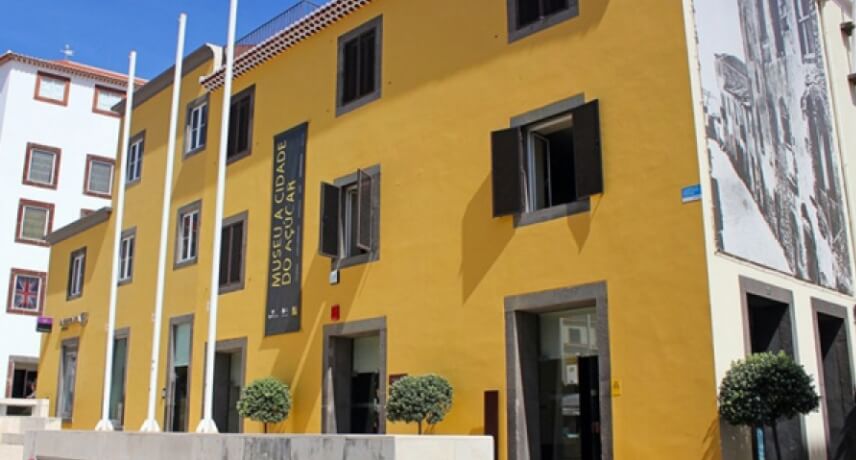
What was the City of Sugar museum before?
Sugar cane was the central money-making industry of this Island and this museum traces the history of Madeira through the rise of this trade. Early in the 16th century, this museum was built as a house that became very famous due to its wealth and size.
This house belonged to João Esmeraldo and he received Christopher Columbus when he went to the island, probably to deal with sugar-related businesses or when he passed here on his third trip to America, that is why the house was named as ‘’Colombo house’’.Unfortunately, some houses were demolished in 1876, such as this one, and used as a grain store.
After a big fire in the 70s and the degradation of the buildings, it was decided to recover this entire area as a square, where they found some important archaeological elements. Some of the material found is currently on display at the sugar museum in ‘Praça do Colombo’.
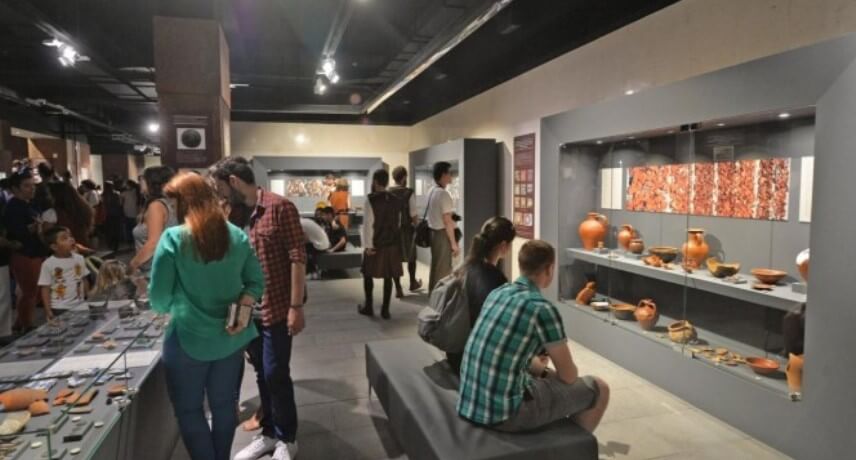
What to see inside the museum?
That is why the City of Sugar Museum is not intended to be a space for identifying the memory of sugar production and technology, it has one main goal, which is to be recognized archaeologically with particularly the excavation in 1989 of the former home of João Esmeraldo in Funchal city.
Sacred Art Museum in Funchal
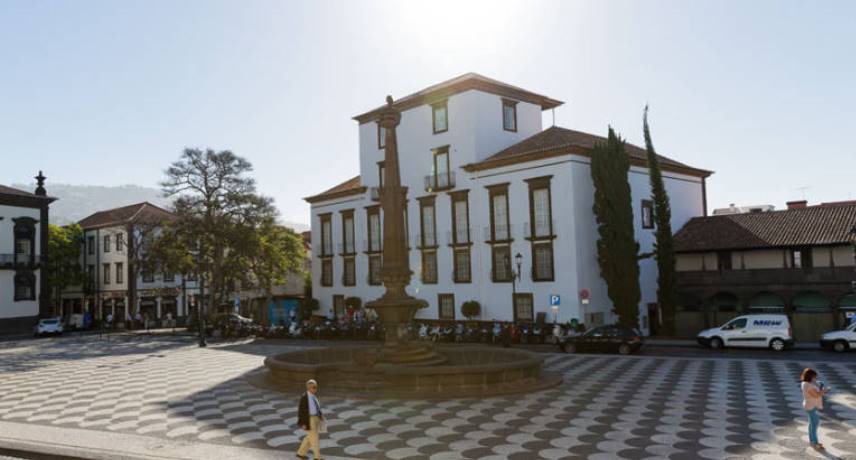
What was the building of the sacred Museum before?
The Sacred Art Museum of Funchal is placed in ‘Episcopal square’ because it was implanted where it once was a palace where the bishops of Funchal lived, from sixteenth-century until the nineteenth century. After that in 1911, it belonged to the National Treasury. After the 1748 earthquake in Madeira island, the palace was remodeled under the coordination of the Bishop of Funchal D. João do Nascimento.
From 1914 to 1943 it worked as the Liceu of Funchal, and after its closure, it was transformed and adapted for the Diocesan Museum. It is one of the oldest museums of Funchal and offers various collections of paintings, sculptures, jewelry, and vestments from the 15th to 19th centuries.
What to see inside the museum?
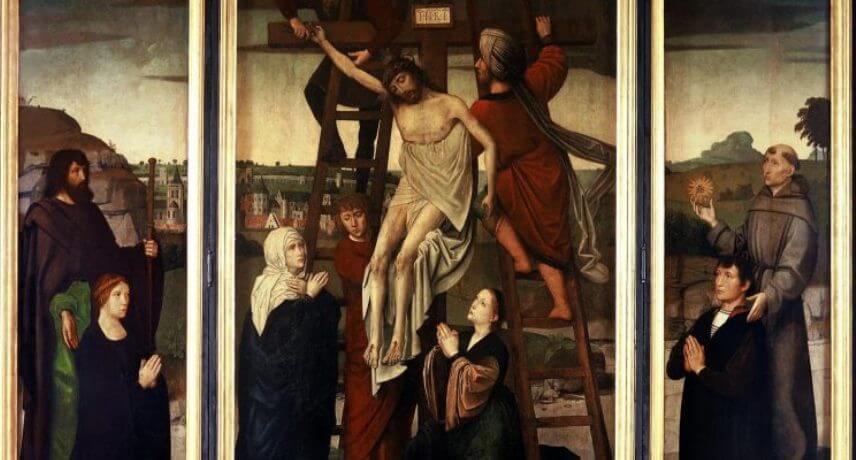
One of the best collections we highlight is the Flemish paintings ordered from Bruges and Antwerp which arrived in Madeira, in the golden age of sugar production. Flemish panels are distinguished not only for their high quality but also for their large dimensions, which are not common in museums in Europe.
We focus also on the Portuguese painting, the Ecce Homo and the Ascension of Christ, dating from the 16th century. About the jewelry, which covers the 15th to 19th centuries, the processional cross of Água de Pena from the 19th century stands out, a tray and chalice from Antwerp, as well as the processional cross, offered by D. Manuel I to the Cathedral of Funchal.
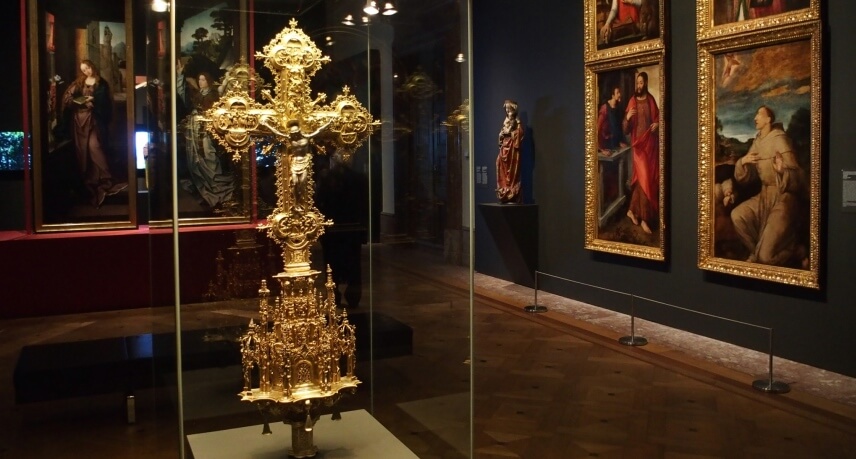
Adress: Rua do Bispo n.º 21, 9000-073 Funchal
Phone: +351 291 228 900
Opening Hours: Tuesday-Saturday 10am-12.30pm and 2.30pm-6.00pm | Sunday 10am-1pm
Closed on Mondays and Holidays
Ticket Price: 3€
Madeira Wine Company-The Blandy's

How did this company become The Blandy’s?
John Blandy, the founder of Blandy’s arrived in Madeira in 1808 because he was looking for a job and because of health reasons.
In 1811, he became an exporter and trader and started to write a story, which would mark the whole family, and also the island itself, through the production of a famous and unique wine in the world - Madeira wine. After that John Blandy went to many countries on several continents selling wine, many as far away as Russia, Northern Europe, the Antilles and the American continent, expanding its activity.
In 1840, Charles Blandy, his son, bought the building that houses the “Blandy’s Wine Lodges” in Funchal - also known as Adegas de São Francisco.
All the wines have differing aging profiles based on their location, which means that each one of the lodge’s rooms has a different character, mainly related to temperatures and humidity. As we see on the picture below it says ‘’Blandy’s’’ because it was the main family who created it, but then is written ‘’Madeira Wine Association’’ because in 1925 Blandy's decided to join a group of wine companies to maximize global exposure and minimize overheads. Under the name of Blandy’s is ‘’Leacock’’ because the family firm of Blandy’s and Leacock's joined, creating the largest producer and exporter of Madeira wine.
By the late 1970s, just the Blandy family held the controlling share and in 1989 the Blandy family invited the Symington Port to strengthen the sales and market. This partnership has continued to the present day, enabling the Madeira Wine Company to play a leading role in Madeira wine. The museum nowadays has artifacts which include letters from Sir. Winston Churchill, coins from Blandy's bank, the island's oldest wooden lagar, and 1920s wine we can find in the Lodge.
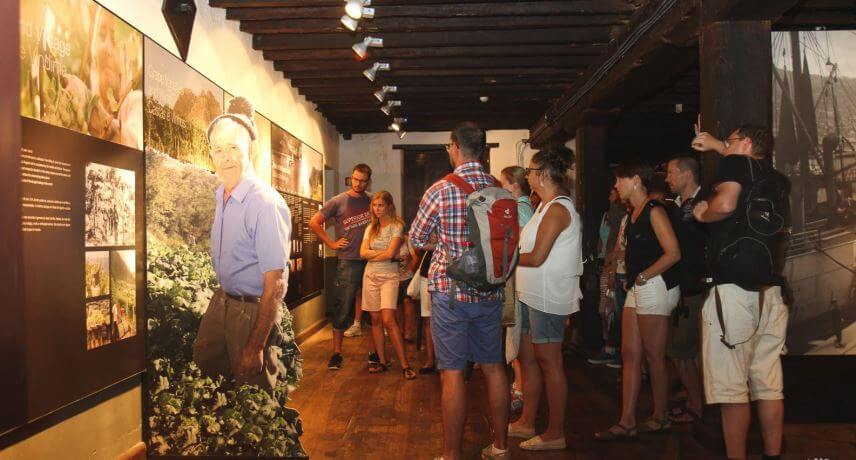
This is some of the tours you can take in this museum to taste Blandy’s wine here and here.
Adress: Av. Arriaga 28, 9000-064 Funchal
Contact: 291 228 978
Opening hours: From Monday to Saturday from 10.00 to 18.00
Madeira Film Experience
To really appreciate what Madeira is and how it started, this presentation is really necessary to know its journey through 600 years of history, well portrayed and with the most important details of our history.
The “Madeira Film Experience’’ is a 30 minutes film that shows how the inhabitants of the islands overcame hunger, isolation, revolution and war to survive until today in a chronological way. The sessions are available in Dutch, English, French, German and Portuguese.
Address: nº1 | Marina Shopping, R. Conselheiro José Silvestre Ribeiro, 9000-060 Funchal
Contact: 291 222 748
Opening hours:
From Monday to Sunday: 10:15 / 11:00 / 11:45 / 12:30 / 13:15 / 14:00 / 14:45 / 15:30 / 16:15 / 17:00 / 17:45
Ticket price:5€
Frederico de Freitas Museum

What was this building before the museum?
Since the 17th century this building used to be known as‘’Calaça house’’ because it was the residence of the Counts of Calçada and their ancestors but around 1941, the house was leased by Frederico de Freitas, who born in Funchal and was a lawyer and notary of the land but also a great collector of decorative arts.
The collection of this museum consists in furniture, sculpture, painting, ceramics, engraving, crystals and tin objects, dating from the 17th to the 19th centuries.
The visit of this museum includes three different parts:
The first refers to Casa da Calçada, where the visitor accesses Halls, Bedroom, Game Room, Dining Room, Tea Room, and Kitchen and where the interiors do not only show objects, but they try to show the ambiance of the old house of the Collector.
These rooms have European painters, and decorative ceramics are arranged on the furniture or in showcases, the themes and objects related to Madeira, such as collections of drawings, erudite and popular figures, illustrating some local traditions, furniture and sculpture are the most evident example dating 19th century.
The second stage of the visit is ‘’Casa dos Azulejos’’, whose entrance gives access to the small and minimalist garden space with a Tile Collection, forming panels of larger or smaller dimensions, or isolated when rarer. It is distributed along with the four floors of the exhibition according to a chronological and original logic, evoking the evolution of ceramic tiles from the beginning to the present. This exhibition has a space dedicated to the manufacture of tiles showing various techniques used, mainly oriental, Islamic and medieval pieces, different clay, accouterments and enamels.
Frederico really appreciated Madeira's artifacts and that’s why he also collected various types of Mugs, with engravings related to Madeira from the 18th century.
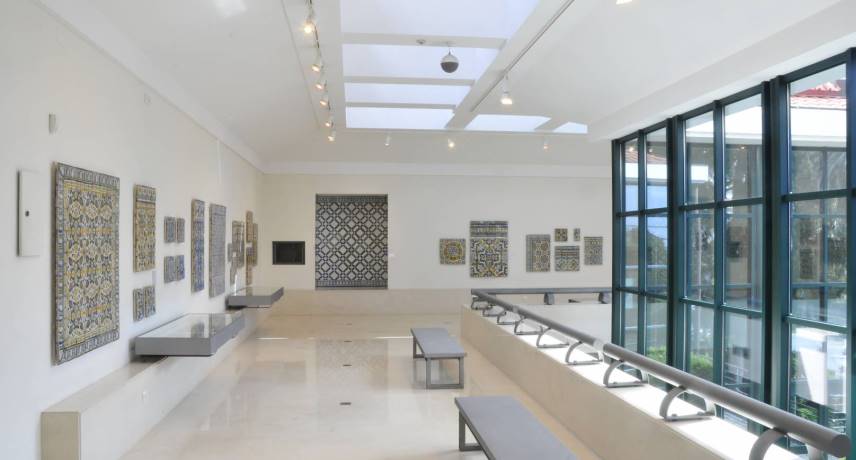
And the third part is the ending of the visit with a Temporary Exhibition space.
Address:Calçada de Santa Clara, n.º 79000–036 Funchal
Telephone:(351)291 202 570
Opening hours:
Tuesday to Saturday: 10a.m. -5.30p.m.
Closed on Sundays and Bank-Holidays.
Tickets:Regular ticket: 3,00 /Pensioners: 1,50 €/Youngsters-card: 1,50 €
Quinta das Cruzes
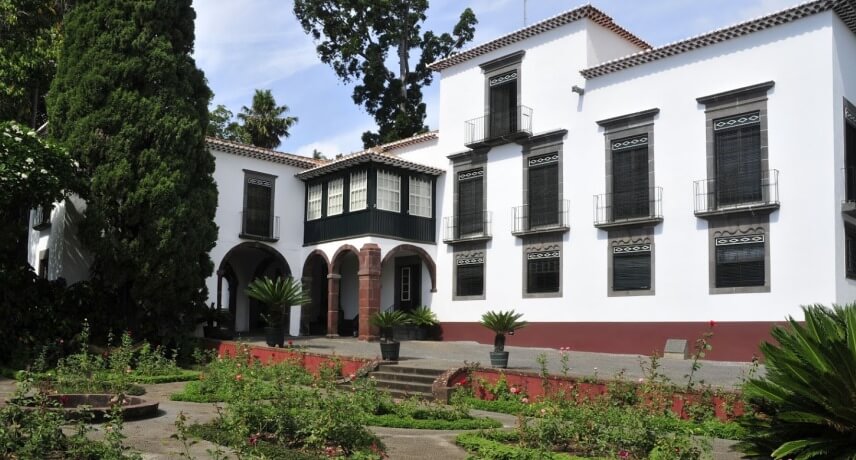
Did you know?
Did you know that Quinta das Cruzes intersects with the history of the Funchal city directly? This building was the last residence of João Gonçalves Zarco, the discoverer of Madeira Island!This place represents more than 500 years of the island's history.
After his death this building continued an important economic transformation of the island society because it was the headquarters of the ‘Banda Filarmónica do Funchal ‘(1929-33)’, office and then a doctor's office and an embroidery factory (1945-48?), related to the Miguéis family, the last owner of Quinta das Cruzes.
What to see inside?
In 1946, the goldsmith César Filipe Gomes had one purpose- create a museum at quinta das Cruzes and that’s why he donated his entire collection of art and antiques to the General Board of the Autonomous District of Funchal. After that, a negotiation process began with the house owners, which was to be expropriated in 1948.
César Gomes donated a cluster of pieces of Jewellery with 260 pieces, including specimens of a religious and profane nature, as well as small objects of female and male adornment, such as rings, pendants, earrings, combs, buckles, snuff boxes, watches, among other exhibitions which seek, as far as possible, to evoke social experiences.
This goldsmith still contributed a lot to the Museum Furniture collection, which nowadays is composed of 371 pieces. In this collection, furniture of English influence is particularly relevant but there is also pieces from as diverse as Spain, France, India and Japan.
Inside this museum, you can still find the Ceramics cluster that comprises 699 pieces of Porcelain. The Drawings and Engravings cluster encompasses a total of 446 pieces which included various authors, some of whom visited the Island of Madeira in the 19th century such as Andrew Picken, Emily Geneviève Smith, Frank Dillon and Rudolph Ackermann. In this collection, we can find various landscapes, customs and traditions, in an attempt to capture the “typical” experiences of Madeira.Among these pieces you can see mostly religious items also such as sculptures, musical instruments, means of transport, textiles and metals.
Address: Calçada do Pico 1, 9000-206 Funchal
Opening Hours:Tuesday to Sunday: 10:00 – 12:30 e das 14:00 – 17:30
Closed on Mondays and Holidays
Ticket price:Normal: € 3.00 /3rd Age: € 1.50
Phone+351 291 740 670334
Natural History Museum
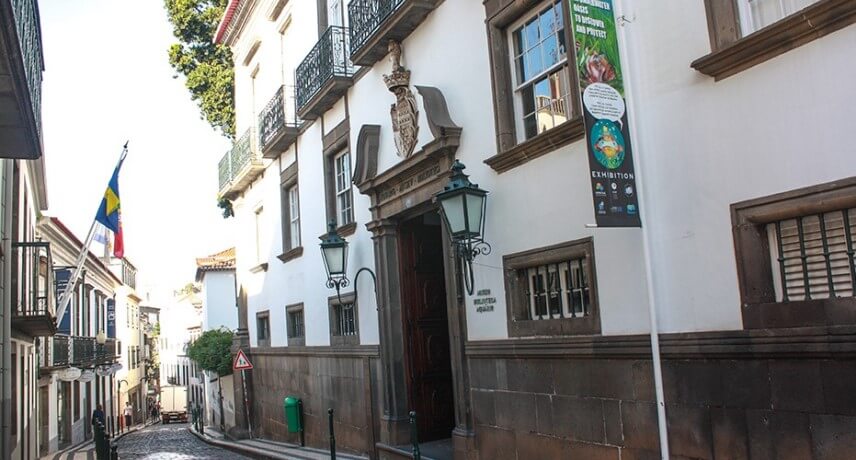
The house of the Carvalhal family…
This building was built by order of Carvalhal family in 18th century and it was one of the most beautiful buildings in Funchal, and the most significant works of Portuguese civil architecture, which is called ‘’São Pedro Palace’’.
Throughout its long years of existence, this palace has functioned as a hotel, a college and in 1929 were established the Funchal municipal library and today, it is the Regional Archives and the Municipal Museum of Natural History, which includes the aquarium.
This museum it is the oldest museum in Madeira Island and it has 41,000 varieties of animal species, including species of fish, birds, sea and land mammals, marine reptiles, insects, and other invertebrates, as well as marine fossils from Porto Santo. The Municipal Aquarium has 15 display tanks, where the most important elements of the coastal marine fauna of Madeira are represented.

You can also find an Aromatic and Medicinal Plants Garden, where you can be able to observe some dozens of medicinal and aromatic plants used and some indigenous and endemic plants of the archipelago can also be seen, including a collection of rocks and minerals.
Address: Rua da Mouraria n.º 31
9004-546 Funchal
Telephone:(351)291 229 761
Opening hours: Tuesday to Sunday: 10.00am – 6.00pm
Closed on Mondays
Tickets: Regular ticket - 2,60€/Pensioners and children ages 11 to 17 - 1,31€
If you are interested in some monuments and museum tour you can also book with us.

